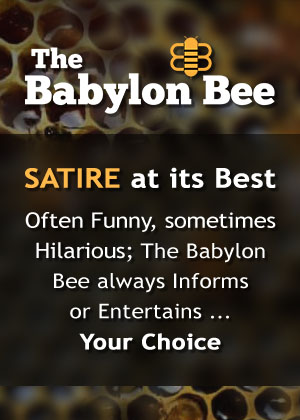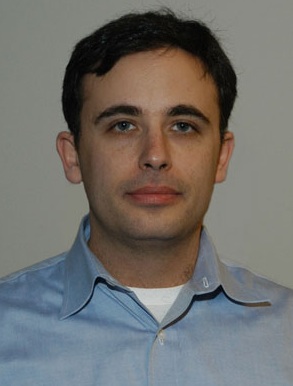Publisher's note: The John William Pope Center for Education Policy provides a treasure trove of information suggesting the better path forward in regards to North Carolina's number one issue - public education. Public education, at all levels, requires a significant amount of funding from our state government, and all one hundred North Carolina counties, so it is essential that leaders effecting education policy get it right, and know that concerned entities, like the John William Pope Center, will be minding their progress to do so. We welcome the John William Pope Center for Education Policy to our growing readership, and expect our readers to learn all they can to do their part in this wise endeavor to better educate our People.
The author of this post is Jonathan Marks.
A review of Jeff Selingo's College UnBound questions whether academia is entering an age of infinite choices.
Meet Aiden - the student of the future.
Jeffrey Selingo, editor at large for the Chronicle of Higher Education, introduces Aiden late in his new book
College (Un)Bound: The Future of Higher Education and What it Means for Students. Aiden does not attend a four-year college. Instead, he assembles his own degree, patching together credits from a wide array of resources and institutions. The massive open online course provider Coursera enables Aiden to take free courses from University of Michigan and University of Pennsylvania professors. For a small fee, he takes exams and earns credits for those courses. He does two internships. He takes several classes from two local colleges, and from another college that offers a "low residency" option, through which Aiden supplements online work with "two intense weeks of one on one meetings with professors, seminars, and social gatherings." He spends a year at and graduates from Michigan State, which "accepts his credits . . . and supplies him with . . . capstone courses" and "research opportunities."
Selingo's book argues not only that Aiden's experience will be fairly common "a decade or so from now" but also that we should, for the most part, welcome the future Aiden represents.
Yet, despite Selingo's enthusiasm, there are plenty of reasons for caution before we embrace Aiden's experience. Some of Selingo's assumptions do not hold up under closer examination, suggesting that his vision of the future also misses its mark.
Particularly questionable is Selingo's description early in the book of a "Lost Decade," from 1999 to 2009, during which colleges chased high-achieving students, and went "deep into debt to build lavish residence halls and other amenities that contribute nothing to . . . actual learning." Because colleges needed to "keep tuition dollars rolling in," "students were treated as customers to be pleased," rather than "being exposed to a rigorous academic experience." To fill seats, colleges encouraged students to "enroll at any cost" and take on excessive debt. It is hard to pay back one's debts if one never earns a degree or finds a job that pays well, but colleges did not make it easy for students to find out how much debt they were going to incur, how likely they were to graduate in six years, and how graduates fared on the job market.
At the end of the Lost Decade, American higher education faced staggering tuitions, student loan debt that topped a trillion dollars, and serious questions about its financial sustainability and educational effectiveness.
Selingo tells the story of the Lost Decade vividly. We learn about High Point University, which has outdoor hot tubs, a steakhouse, and "perhaps the only director of WOW in the country." We are taken on a bank-sponsored cruise with financial aid counselors, who dine on "artichoke and Parmesan torte, filet mignon with a port-sweetened demi-glace, truffled mashed potatoes, and a Valhrona chocolate torte." We then learn of Andrew Cuomo's investigation of the student loan industry, which uncovered "deceptive marketing practices and routine, widespread kickbacks." These are not the only disturbing stories Selingo tells about our colleges and universities.
However, Selingo's narrative distorts our picture of what ails higher education. First, there was no "Lost Decade." In percentage terms, college costs increased more at four-year colleges between 1987 and 1998 than they did between 1998 and 2008. Mark Edmundson's 1996 article, "
On the Uses of Liberal Education: As Lite Entertainment for Bored College Students" suggests that the trends Selingo identifies were well underway prior to the Lost Decade. Edmundson complained that his own University of Virginia was beginning to resemble a "northern outpost of Club Med." More importantly, as the Delta Cost Project reports
here, spending on amenities, while "fair game," is not a significant driver of college costs.
Second, the trillion-dollar figure notwithstanding, there is no student loan debt crisis. Selingo highlights a New York Times story about a recent graduate over $120,000 in debt, even though the graduate, according to a stinging
criticism of the story, "has more debt than almost every other college graduate and . . . chose to enroll at. . . Ohio Northern University, where average debt levels exceed those at almost every other college."
Selingo implicitly concedes that point. According to one rule of thumb he mentions, a student should not borrow more than she expects to make her first year after graduation. But "by that measure, many college graduates seem to be doing well: Average debt is about $25,000 and first-year salaries are around $36000." Given such facts, one cannot, endorse Selingo's tale, in which "ego driven" college officials seek to hook "prospective students on emotion" and to make "huge profits on the backs" of those they hook.
Never mind, though: Selingo concludes two paragraphs later that excessive "borrowing is the biggest problem facing higher education."
Another crucial area in which Selingo's explanation rests upon shaky foundations is student demand. He describes a scenario in which students who "will be showing up on college campuses in the next ten years will want to absorb and apply knowledge on their own terms. They will extend the customer mentality of the Lost Decade and decide when, where, and how they learn, and what it means to have a degree." While prestigious and rich institutions will be able to resist change, he continues, others will have to accede to the demands of students like Aiden, with whom we began, to accept credit from a wide variety of sources and to lower their own costs.
But Selingo is wrong about the student of the near future. Ten years from now, the less prestigious, less wealthy institutions that Selingo thinks incapable of resisting change will likely enroll even more first-generation college students than they do today. It is unlikely that such students, who have trouble completing degrees now, will thrive under an educational regime in which they are expected, as Aiden is, to invent their own degrees. Selingo admits as much when he praises Guttman Community College, part of the City University of New York. Selingo quotes President Scott Evenbeck on why Guttmann's students all take the same first year courses: "Options don't work well for first-generation students. They are faced with a lot of confusing choices."
Indeed, many of today's students, not just the first generation ones, lack the focus needed to craft a coherent, meaningful education in the free-form manner of Aiden. Yet, by proposing Aiden as the wave of the future, Selingo is doubling down on the consumer mentality he otherwise derides. Indeed, he forthrightly compares college to "an unbundled cable package, where you're allowed to pick and choose your channels." He never explains how the numerous institutions Aiden makes use of will perform what he calls "the critical role higher education plays in preparing the whole person to be a productive citizen in a democratic society." More likely, students like Aiden will be on their own, without guidance.
And, if current trends hold, such students are likely to forgo the very liberal arts curricula that will best offer guidance. Selingo recognizes their importance, saying that, in "an increasingly complex world, the foundation of learning - a liberal-arts education - is more important than ever." Yet, after drawing attention to the liberal arts so strikingly, Selingo has almost nothing to say about them.
Still, one has to admit that the case Selingo builds against American higher education is powerful. Six-year graduation rates below 50 percent are common. The United States now ranks "twelfth in the percentage of twenty-five to thirty-four year olds with postsecondary credentials" among countries in the Organization for Economic Cooperation and Development. "As recently as 1995, the United States ranked first." Legitimate questions have been raised, most recently by the authors of
Academically Adrift, about how much even students who obtain a credential learn in college. And despite all that, college education is very expensive. In the second and third parts of College Unbound, Selingo explains why change is coming and why it is mostly for the good.
One of the most important reasons for Selingo's positive outlook is technology. Thanks to the information revolution, we will be able to collect and analyze massive amounts of data about students and how they learn. This analysis should help direct students to colleges, courses, and majors at which they can succeed, thereby boosting completion rates. Such data can also be used to inform adaptive learning systems capable of providing instant feedback to students and of helping them learn at their own pace. Carnegie Mellon's
Open Learning Initiative, as Selingo reports, is a pioneer in this field. Early evidence suggests that in some kinds of courses, supplementing adaptive learning systems with weekly face-to-face meetings can cut costs without reducing how much students learn.
I propose we take Selingo at his word. Assuming that liberal arts education is not solely for those who attend wealthy institutions, the challenge for those who care about the future of our colleges and universities is to reflect on what such an education requires and how it can be delivered at a reasonable cost. To meet that challenge it is well worth considering Selingo's book; its excesses and errors notwithstanding, it speaks up for students, justly takes us to task for the many ways in which we are failing them now, and urges us to open-minded and bold thinking about the future of higher education.























